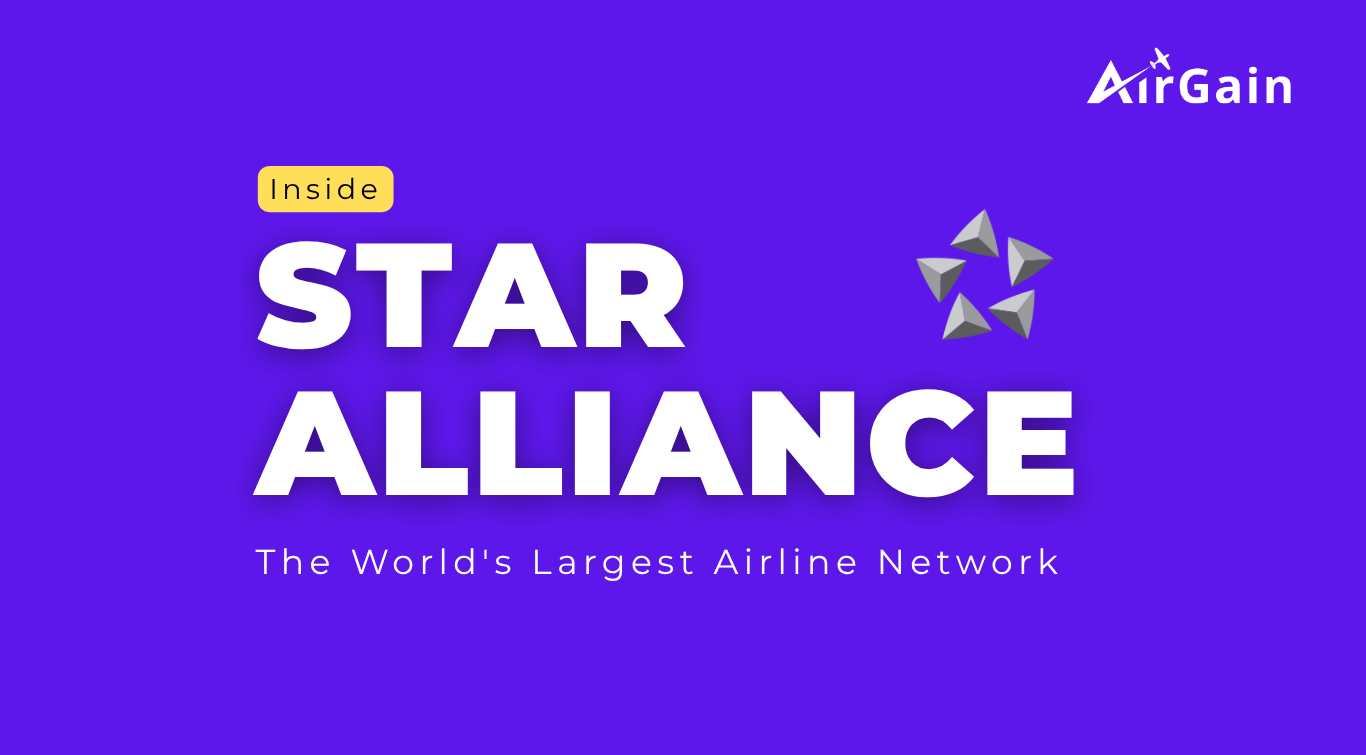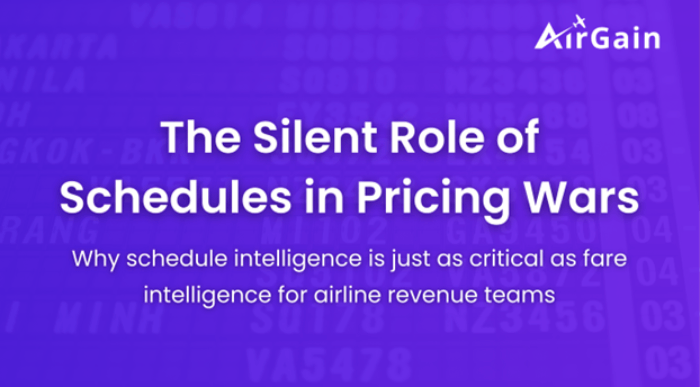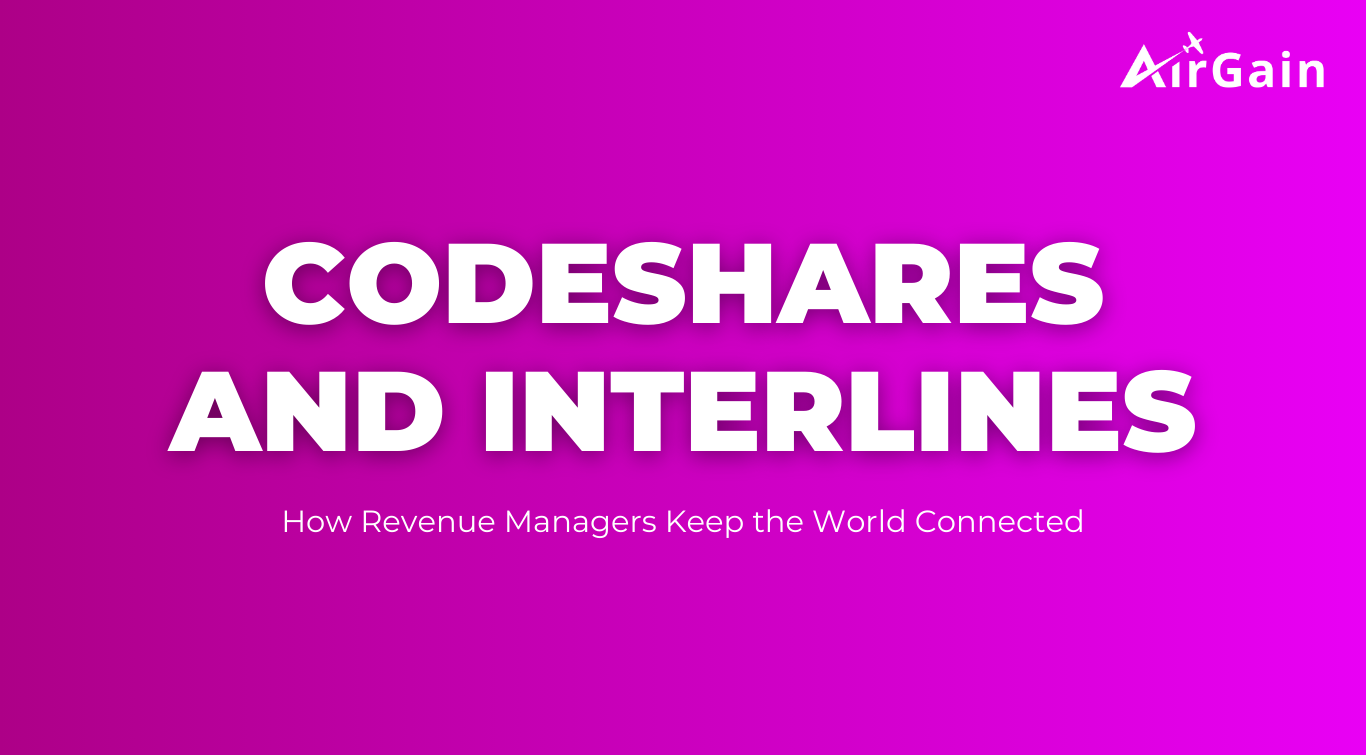13 May

Inside the World’s Largest Airline Alliance: How Star Alliance Connects You to 190 Countries
Discover the behind-the-scenes power of Star Alliance and how your single ticket can unlock global perks, lounge access, and smooth layovers in over 1,300 airports.
The airline industry’s most expansive alliance, Star Alliance, is a masterclass in global connectivity and collaboration. For airline revenue and pricing managers, understanding Star Alliance is more than just knowing a list of partner airlines – it’s about leveraging a network that spans almost the entire globe. In this thought leadership piece, we dive into how Star Alliance was founded, why it remains strategically vital, and how it enhances everything from pricing coordination and route planning to passenger experience. The insights and data below shed light on how one alliance can unlock rate intelligence, price intelligence, and seamless airline partnerships that drive success in 190 countries worldwide.
From Five Airlines to a Global Alliance Powerhouse
Star Alliance was born in May 1997 as the world’s first truly global airline alliance. Five founding carriers – United Airlines, Lufthansa, Air Canada, Scandinavian Airlines (SAS), and Thai Airways – came together across three continents with a bold vision. Their inaugural slogan, “The Airline Network for Earth,” underscored an ambition to connect passengers to major cities worldwide through cooperation rather than competition. By uniting routes and services, these airlines set the template for modern airline alliances and gained a first-mover advantage that still resonates today.
Over two decades later, that small partnership has grown into an alliance of 25 member airlines (formerly 26, until a recent reshuffle) that collectively serve an unrivaled global network. Star Alliance carriers now fly to over 1,300 destinations across more than 190 countries, reaching nearly every corner of the world. What began with a handful of partners has transformed into a globe-spanning network connecting key hubs in Europe, North America, Asia, Africa, and beyond. This impressive coverage means a traveler can, for example, book a single ticket from New Delhi to São Paulo or from Toronto to Cape Town, all under the Star Alliance umbrella.
The strategic importance of this alliance is evident in its sheer market presence. Star Alliance is the world’s largest airline alliance by market share, carrying roughly 17.4% of global airline passengers – significantly more than its nearest competitors, SkyTeam (13.7%) or oneworld (11.9%). In other words, nearly one in every six airline seats globally is operated by a Star Alliance member. Such scale not only garners industry accolades (Star Alliance has been named the World’s Leading Airline Alliance multiple years running) but also provides a formidable platform for collaborative strategy. Each member airline remains independent in branding and finances, yet they collectively benefit from the alliance’s worldwide reach and resources.
Notably, Star Alliance’s membership roster reads like a who’s-who of leading carriers. From United Airlines and Air Canada in North America to Lufthansa, SWISS, and Turkish Airlines in Europe, and from Singapore Airlines and ANA in Asia to Ethiopian Airlines in Africa, the alliance spans every inhabited continent. These members coordinate through a centralized Star Alliance management team to align strategies and standards. The alliance even has a common branding presence: many member aircraft are proudly painted in Star Alliance livery (white fuselage with “Star Alliance” titles and a black tail bearing the star logo). In fact, airlines often repaint select jets in the Star Alliance colors, symbolizing their shared identity.
A Thai Airways A350-900 in Star Alliance livery, showcasing the alliance’s branding that unites diverse member airlines. This unity in branding hints at the deeper coordination happening behind the scenes.
Uniting 1,300+ Airports: Unparalleled Network and Hubs
One of Star Alliance’s greatest strengths is its unparalleled network connectivity. Alliance members operate out of over 50 major global hub airports, often co-locating in the same terminals to offer smooth interline connections for passengers. For example, at large hubs like Frankfurt, Tokyo-Narita, or Chicago O’Hare, Star Alliance carriers share terminals, check-in counters, and lounges. This co-location strategy means that when a passenger transfers from, say, Lufthansa to United, they can walk just a short distance within the same terminal, with minimal connection times and hassle. The alliance’s coordination ensures that schedules are synergistic – flights are timed to optimize connections and reduce layover durations. A traveler flying multi-leg journeys under Star Alliance benefits from through-checking of baggage and streamlined transfers, all planned intentionally by the network partners.
From an airline route planning perspective, no single airline can profitably serve every city on every continent. Star Alliance solves this by letting carriers rely on partners to extend their reach. Member airlines frequently expand their market coverage without adding new aircraft or routes of their own. Instead, they connect their passengers onto partner airlines’ flights. For instance, Air India can carry a passenger from Delhi to Singapore, and then seamlessly hand them off to Singapore Airlines for the Singapore-to-Sydney leg – all sold on one ticket. By “picking up and connecting existing partner flights,” each airline offers destinations far beyond its standalone network. This translates into more ticket sales and higher load factors across the alliance. In essence, Star Alliance functions as a virtual mega-airline: rather than duplicating each other’s routes, the member carriers knit together their schedules to cover gaps and avoid unnecessary overlap.
Coordination at this level also brings operational efficiencies and cost savings. Within the alliance, airlines often share resources and facilities such as airport lounges, ground handling services, and maintenance bases. Joint procurement and co-location can significantly lower operational costs for each member airline. For example, multiple Star Alliance carriers might use the same catering services or fuel contracts at a hub airport, leveraging economies of scale. They may also invest in unified IT systems – Star Alliance even provides a developer platform to integrate member airline apps with alliance-wide data (for things like baggage tracking or seat maps). All these efforts guarantee a consistent level of service across carriers while saving money and time. For a pricing manager, these efficiencies can improve an airline’s cost structure and flexibility in competitive pricing, knowing that partners are helping shoulder some operational burdens.
Strategic Partnerships, Codeshares, and Route Coordination
A cornerstone of Star Alliance’s success is the web of partnerships and codeshare agreements that bind its members. Codesharing is a practice where one airline markets a flight under its own code, even though the flight is operated by a partner airline. Star Alliance members leverage codeshares extensively to broaden their customer appeal. This means an airline like Lufthansa can sell a ticket to a city it doesn’t fly to, by placing its “LH” flight number on a flight operated by, say, Ethiopian Airlines. The result is more choices and convenience for travelers and better capacity utilization for airlines. Codeshare agreements allow member airlines to sell tickets on each other’s flights, offering passengers a wider variety of routes and flight times as if it were a single airline’s network. This cooperation translates to seamless travel experiences for passengers and increased feeder traffic for airlines – passengers flying a partner leg fill seats that might otherwise go empty.
Beyond codeshares, Star Alliance fosters deeper coordination in route planning and scheduling. Member carriers meet regularly through alliance committees to discuss network development. They might coordinate to ensure that flight timings at hub airports complement each other (for example, aligning banked arrivals and departures waves). By synchronizing schedules, alliances reduce waiting and transfer times between flights. If one member airline withdraws from a route due to economic reasons, often another alliance partner can step in to serve that market, thus preserving the alliance’s overall connectivity. This collaborative approach helps Star Alliance maintain comprehensive coverage without every airline flying everywhere. For instance, when South African Airways had to cut certain long-haul routes, other Star members could carry connecting passengers via their hubs, ensuring travelers still had an alliance option to reach those destinations.
All these partnerships are underpinned by formal and informal agreements on sharing revenue and information. Airlines in Star Alliance typically sign special prorate agreements with each other – essentially agreeing on how to split fares when a passenger’s journey involves multiple carriers. These agreements incentivize airlines to hand off passengers to partners rather than treat them as lost business. Data-sharing and market coordination also play a role: airlines share certain demand forecasts and booking data with partners on codeshare routes to better match capacity with expected traffic. This level of cooperation requires trust and a mutual understanding that what’s good for the alliance overall will benefit each member. For revenue managers, such synergy means more stable loads on flights, access to partner markets, and a chance to optimize route planning collaboratively (for example, jointly deciding which airline is best suited to open a new route in an emerging market).
It’s worth noting that alliance membership can also pave the way for even deeper partnerships like joint ventures (JVs) on strategic routes. In Star Alliance, there are numerous bilateral JVs – United and Lufthansa across the Atlantic, or ANA and United across the Pacific, to name a couple – where airlines share revenue and coordinate prices fully on those routes (with regulatory approval). These JVs are separate agreements beyond the basic alliance framework, but they are made possible by the relationships and trust built within the alliance. In such cases, airlines achieve “metal neutrality,” meaning it doesn’t matter whose aircraft actually flies the passenger, as the revenues are shared. While not all alliance members have joint ventures, the alliance often acts as an incubator for deeper cooperation, allowing carriers to find the right partners for expanded collaboration.
Coordinated Pricing and Market Intelligence
Aligning fares and revenue strategies across dozens of airlines is no small feat. Star Alliance provides a platform for pricing coordination that can greatly enhance each member’s revenue potential. One way this manifests is through alliance-wide fare products. A prime example is the Star Alliance Round-the-World ticket, a special fare that lets passengers fly around the globe using any combination of Star Alliance airlines on a single ticket. This product requires intensive coordination – member airlines agree on mileage limits, routing rules, and price zones to jointly offer a seamless world-spanning fare. With this single ticket, a passenger could literally circumnavigate the Earth via multiple carriers, choosing from over 1,300 destinations in more than 190 countries served by Star Alliance’s 25 airlines. Revenue from such a ticket is shared among the carriers based on the segments flown, illustrating how Star Alliance turns global network coverage into collaborative revenue opportunities.
Beyond special products, Star Alliance members often harmonize their pricing strategies on connecting itineraries. If a journey from Point A to C involves Airline X flying A to B and Airline Y flying B to C, the two will work out proration formulas (or use industry standard ones) to split the fare paid by the customer. The goal is to price the through ticket competitively against other carriers (including rival alliances) while ensuring both airlines find the arrangement profitable. By coordinating these fares, Star Alliance carriers make it attractive for passengers to book multi-airline trips without worrying about buying separate tickets. It also prevents scenarios where the combined fare would be so high that travelers avoid connections – the alliance has an interest in optimizing joint prices so that the total fare is reasonable yet revenue-optimal for all involved. This kind of price intelligence – understanding how to price multi-leg, multi-carrier journeys – is a critical skill for alliance revenue managers.
Another major arena of pricing coordination is corporate and group travel. Star Alliance offers an all-in-one corporate travel solution known as Star Alliance Corporate Plus. This program allows large multinational companies to negotiate a single unified contract covering all member airlines, rather than separate deals with each carrier. For the corporate client, it dramatically simplifies travel management – one agreement can provide volume discounts and streamlined billing across the entire Star Alliance network. For the airlines, it means jointly securing lucrative corporate business that might otherwise be won by a competitor or require complex individual negotiations. This coordinated approach to corporate sales is a win-win: the corporation gets global travel coverage under one price agreement, and Star Alliance members collectively lock in a loyal customer across all routes. Such collaboration on pricing and sales would be nearly impossible without an alliance framework to align interests and administrate the deal.
In managing these complex fare arrangements and competitive situations, airlines increasingly rely on advanced rate intelligence tools. Revenue management teams within Star Alliance carriers use price intelligence platforms to monitor fare levels across markets and benchmark against competitors (including airlines in rival alliances or independent carriers). For instance, if oneworld or SkyTeam carriers adjust prices on a certain route, Star Alliance members want to know immediately. By sharing market data and insights, alliance members can respond swiftly—sometimes even coordinating promotional fares or sales campaigns on parallel routes to maintain market share. Star Alliance’s massive combined network also yields a wealth of market intelligence. The alliance as a whole accounts for roughly 43% of global airline seat capacity when combined with the other two alliances, giving Star members a macro-level view of travel demand patterns. Through alliance forums and data exchange, a member airline can gain insights into emerging traffic flows (for example, a surge in travel to a previously underserved country) and then adjust its pricing or capacity with confidence backed by alliance-wide data.
Crucially, Star Alliance members trust each other with sensitive information to enable this level of coordination. They often share anonymized booking trends, forecasts, or competitor intel under confidentiality, recognizing that collective knowledge leads to better outcomes for all. The alliance even coordinates on technology to support revenue management – for example, Star Alliance has worked on integrating its members’ booking systems and even exploring standardizing some digital infrastructure. In one modern initiative, Star Alliance is pushing for half of its airlines to adopt biometric passenger processing by 2025, which, while a customer service improvement, also can reduce costs (less staffing at boarding gates) and improve on-time performance – indirectly supporting revenue by increasing efficiency. This shows how the alliance’s scope of coordination is broad, touching operational tech that ultimately feeds into a better bottom line.
For an airline decision-maker, leveraging these alliance-driven pricing tools and market intelligence is key. The combination of global rate intelligence data and alliance coordination allows pricing managers to optimize fares in ways a single airline couldn’t do alone. It’s about having the right price for the right customer at the right time, with the confidence that your partner carriers are aligned in the strategy. In competitive markets, Star Alliance effectively acts like a 25-member team: the intelligence one member gathers (say, a new aggressive fare by a competitor) can be shared and addressed collectively. This cooperative stance can prevent destructive price wars among alliance members and present a united front in markets where they compete with other alliances or low-cost carriers.
Elevating the Passenger Experience Across 190 Countries
While the behind-the-scenes coordination is crucial for airlines, the passenger experience is where the alliance concept truly shines. Star Alliance’s promise to travelers is a “seamless” journey, and for the most part, it delivers exactly that. From check-in to arrival, alliance coordination makes what could be a complicated multi-airline trip feel like one smooth voyage. Here’s how Star Alliance enhances the travel experience for millions of passengers each year:
- One-Ticket Convenience & Seamless Connections:
Travelers can book a single itinerary that spans multiple Star Alliance airlines, enjoying a unified check-in and baggage transfer. You check your luggage once at the start, and it flows through to your final destination – no need to re-check bags during layovers. Thanks to coordinated schedules, layover times are optimized; waiting and transfer times between flights are minimized. If a delay does occur causing a missed connection, the alliance framework kicks in: passengers are rebooked on the next available flight (even if it’s with a different Star Alliance airline) or given alternative arrangements. This level of cooperation during disruptions greatly reduces travel stress.
- Global Lounge Access and Priority Services:
Frequent flyers and business-class passengers reap substantial perks through Star Alliance’s elite status recognition. A traveler with Star Alliance Gold status (earned via any member airline’s frequent flyer program) gains access to more than 1,000 airport lounges worldwide before their flight. In these lounges – found in all major airports – they can relax with complimentary refreshments, Wi-Fi, and a quiet space to work or unwind, regardless of which Star airline they’re flying that day. Gold status also grants priority airport check-in, boarding, and baggage handling across all airlines in the alliance. This means Gold members use dedicated check-in counters, board earlier, and get their bags tagged priority – saving time at every step. Even Silver status members receive some priority perks (like priority standby) within the alliance. These benefits are standardized, so the experience is familiar and smooth no matter if you’re flying with Singapore Airlines, United, or Turkish Airlines.
- Unified Loyalty Programs:
Star Alliance makes it easy for passengers to earn and redeem miles across all member airlines. When you join any one of the member frequent flyer programs (for example, Lufthansa’s Miles & More, United’s MileagePlus, or Air India’s Flying Returns), you automatically tap into a vast network of partners. You can accrue miles on any Star Alliance flight and then use those miles for reward tickets or upgrades on any member carrier. This pooled loyalty ecosystem means flyers reach elite status faster by combining flights on different airlines towards one status tier. Once status is achieved, those elite perks (like Star Alliance Gold) apply alliance-wide, as described above. For corporate travelers and frequent fliers, this is a major incentive – it effectively makes loyalty currency (miles/points) more valuable and flexible. No single airline, on its own, could offer the ability to earn points in, say, South America one week and spend them in Asia the next; the alliance makes that possible.
- Consistent Service Standards:
The alliance works to ensure a baseline of high service quality across its members. Through joint training programs and shared best practices, Star Alliance airlines strive to deliver a consistent experience – whether it’s check-in procedures, baggage allowance for elites, or onboard amenities. Many Star Alliance hubs have dedicated alliance help desks and signage, so passengers always know where to find assistance for onward connections. The concept of “Move Under One Roof” has been implemented at numerous airports, meaning all Star carriers operate from the same terminal or area, making transfers as painless as possible. Additionally, Star Alliance has been at the forefront of digital innovation for travelers: from developing a single biometric identity that can be used for boarding across multiple airlines, to creating online tools like the Star Alliance award travel search. These initiatives further smooth the journey, removing friction points that typically come with international, multi-airline travel.
For passengers, all these benefits boil down to trust and convenience. Star Alliance essentially promises that “the network has you covered.” Your single ticket unlocks a world of perks and support: lounge access in a foreign city, protection if things go awry, and the comfort of familiar treatment wherever you go. This enhanced experience not only makes travel more enjoyable but also encourages customer loyalty to Star Alliance airlines. Satisfied passengers often become repeat customers, which in turn drives revenue for member airlines. In the eyes of a revenue manager, the alliance’s investment in passenger experience is not just goodwill – it’s a strategic play to retain high-value flyers (who contribute a large share of revenue) within the Star Alliance family.
Conclusion: Leveraging Alliance Power in Airline Strategy
Star Alliance offers a compelling case study in how cooperation can amplify an airline’s strengths. By banding together, 25 airlines have achieved a global presence and service offering far beyond the reach of any single carrier. For airline revenue and pricing managers, Star Alliance is more than a marketing alliance; it’s a sophisticated platform for collective route planning, coordinated pricing strategies, and shared market intelligence. It enables members to optimize connections and schedules jointly, to approach corporate clients with unified offerings, and to glean insights from a worldwide trove of data on travel demand and pricing trends. In an era where airlines must be agile and data-driven, the alliance’s ability to disseminate rate intelligence across its network is a formidable competitive advantage.
The continued success of Star Alliance (now in its 28th year and still going strong) underscores that the whole can truly be greater than the sum of its parts. For decision-makers, the key takeaway is that strategic partnerships pay off – whether through global alliances or other collaborative ventures. By enhancing passenger loyalty through seamless experiences and by strengthening each airline’s market positioning through partnership, Star Alliance shows how airlines can “grow bigger by working together.” As the industry evolves with new technology and shifting travel patterns, Star Alliance’s behind-the-scenes coordination – from digital integration to joint ventures – will likely deepen, offering even more opportunities for innovative pricing and service models.
In the end, an alliance is only as strong as the commitment of its members. Star Alliance’s longevity and reach speak to a shared commitment to excellence and mutual benefit. For an airline contemplating its next move in revenue strategy, looking “inside the world’s largest airline alliance” provides inspiration on harnessing networks, data, and cooperation to achieve global success. Star Alliance connects you to 190 countries – and it does so by connecting airlines to each other in an unprecedented way. The lesson for industry leaders is clear: in a connected world, collaboration can be your strongest catalyst for growth.
Ready to elevate your airline revenue management? Follow AirGain on LinkedIn for insightful and engaging blogs.



